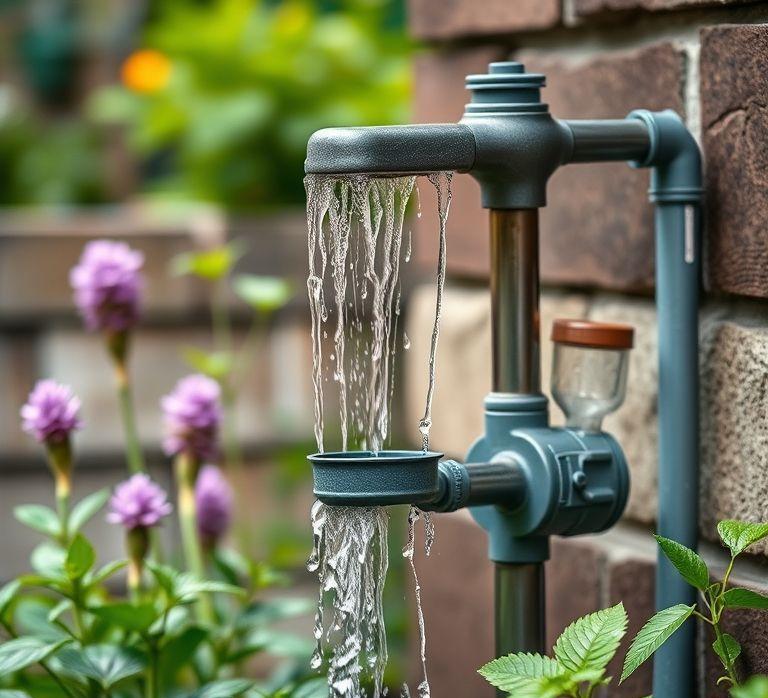Harvesting the Heavens: High-Tech Rainwater Collection and Smart Usage Systems for Your Home and Garden
Embrace sustainability and reduce your water bill by tapping into a readily available resource: rainwater. Modern rainwater harvesting systems have evolved beyond simple barrels. Today’s high-tech solutions offer sophisticated filtering, ample storage, and intelligent distribution methods, making them a smart and environmentally conscious choice for homeowners looking to utilize rainwater for non-potable applications.
The Evolution of Rainwater Harvesting: From Barrel to Brains
Traditional rainwater harvesting often conjures images of a simple barrel placed under a downspout. While effective for small-scale collection, these systems lack the sophistication needed for consistent and clean water supply. Modern systems, however, incorporate multiple stages of filtration to remove debris, sediment, and even microscopic contaminants. First-flush diverters discard the initial rainwater, which typically contains the most pollutants washed from the roof. Subsequent filters, often including sediment filters, carbon filters, and even UV sterilization, ensure the collected water is clean and safe for its intended non-potable uses. This process makes the water much safer, cleaner, and ready for a wide range of applications, such as irrigation, toilet flushing and laundry.
Beyond filtration, advanced rainwater harvesting utilizes durable and often underground storage tanks. These tanks, made from materials like polyethylene or concrete, preserve the water quality by protecting it from sunlight and temperature fluctuations, reducing algae growth and evaporation. Selecting the right tank size is crucial and depends on factors such as rainfall patterns, roof area, and water usage needs.
Smart Distribution: Irrigation and Beyond
The heart of a high-tech rainwater harvesting system lies in its smart distribution capabilities. Automated pumps, often coupled with pressure sensors, deliver water on demand. Smart controllers, connected to weather data and soil moisture sensors, optimize irrigation schedules. For example, the system might delay watering after a rainfall event or provide more water during periods of drought. This automation not only conserves water but also ensures plants receive the precise amount of hydration they need, reducing water waste and promoting healthy growth. Furthermore, some systems can be integrated with smart home platforms, allowing users to monitor water levels, adjust settings remotely, and receive alerts for potential leaks or system malfunctions. Integrating these technologies into a home system allows people to save on costs and use water more efficiently.
Calculating Cost Savings and Environmental Impact
Investing in a high-tech rainwater harvesting system offers significant long-term financial and environmental benefits. The most obvious is reduced water consumption from municipal sources, which translates directly into lower water bills. The exact savings will vary depending on local water rates, rainfall patterns, and the amount of rainwater harvested and used. However, homeowners can expect to see a noticeable decrease in their water expenses, especially during peak irrigation seasons. Beyond financial savings, rainwater harvesting reduces the strain on municipal water supplies, particularly important in regions prone to drought or water scarcity. By using rainwater for non-potable purposes, you conserve valuable drinking water for essential needs. Additionally, rainwater is naturally soft, meaning it is free of minerals and chemicals found in treated tap water. This is beneficial for plants, as it prevents mineral buildup in the soil and promotes healthier growth. It can also extend the life of appliances like washing machines by preventing scale buildup.
Choosing the Right System for Your Needs
Selecting the appropriate rainwater harvesting system requires careful consideration of your specific needs and circumstances. Start by assessing your average rainfall and roof area to estimate your potential rainwater harvesting capacity. Next, determine your water usage requirements for non-potable applications such as irrigation, toilet flushing, and laundry. Consider the available space for storage tanks and the ease of installation. It’s also important to research local regulations and any restrictions on rainwater harvesting. Consult with a qualified rainwater harvesting professional who can assess your site, recommend the right system components, and ensure proper installation and maintenance. This ensures the rainwater harvesting system fits your needs, allowing for long term usage and savings.
Conclusion
High-tech rainwater harvesting presents a compelling solution for homeowners seeking sustainable and cost-effective water management. From advanced filtration and intelligent distribution to automated irrigation and integration with smart home systems, modern systems offer a significant upgrade over traditional methods. By carefully evaluating your needs and choosing the right system, you can reduce your environmental footprint, lower your water bills, and enjoy a healthier, more sustainable home and garden. It’s time to harvest the heavens and embrace a smarter approach to water conservation.



